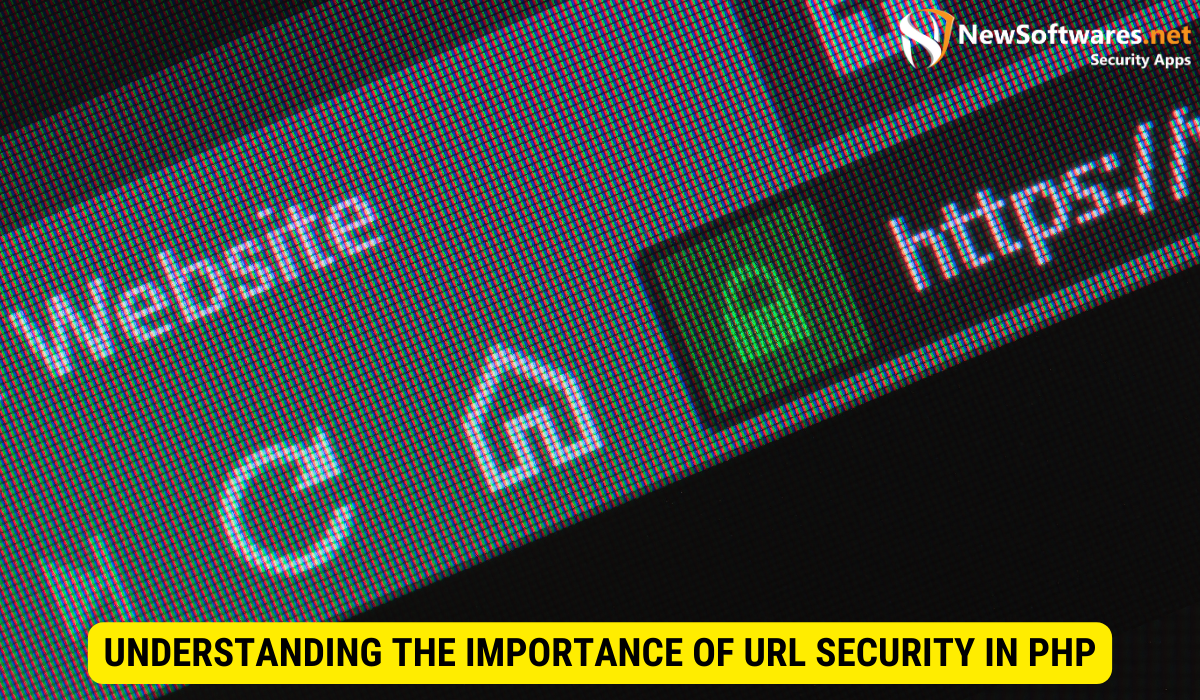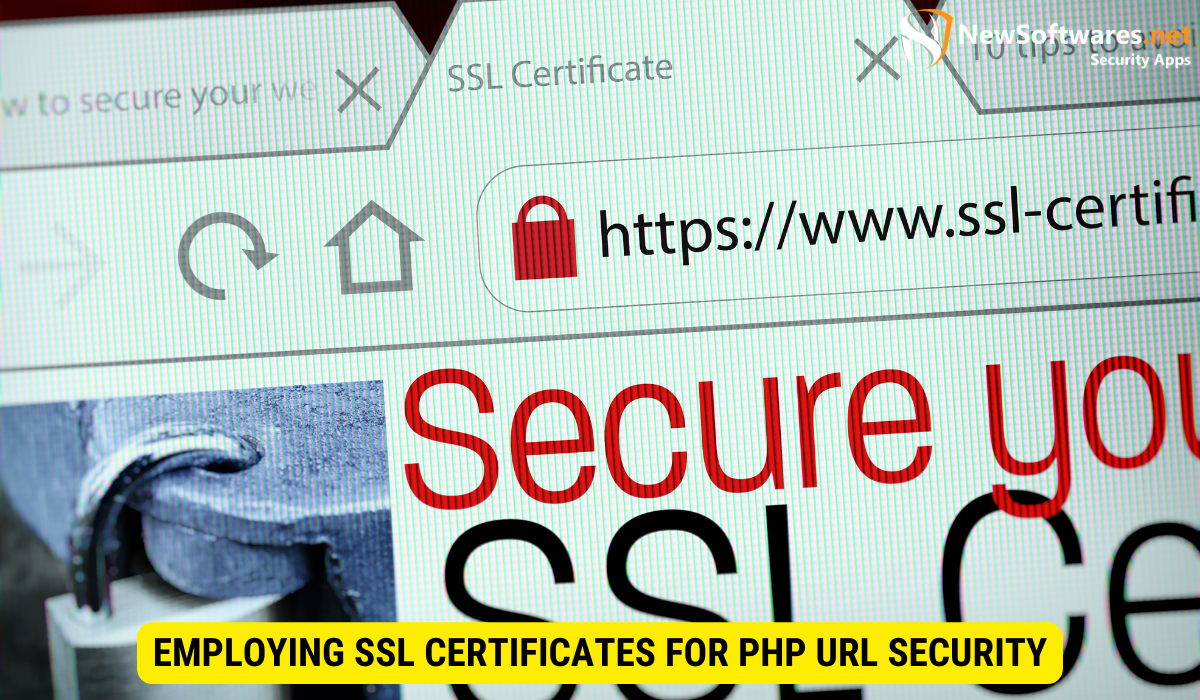To safeguard transmitted data and secure URLs in PHP, use URL encoding techniques with functions like
urlencode()andfilter_var(), transition from HTTP to HTTPS for encrypted data transmission, and integrate SSL certificates to authenticate and establish secure connections. These practices enhance the security of PHP applications, protecting sensitive user data from potential threats like cross-site scripting and SQL injection.
URL security is a critical aspect of web development, especially when it comes to safeguarding transmitted data. I will explore the importance of URL security in PHP and provide you with essential knowledge and techniques to ensure that your URLs are secure and protected. By understanding the potential risks of unsecured URLs and implementing best practices for URL encoding, HTTPS usage, and SSL certificate integration, you can enhance the security of your PHP applications and protect your users’ sensitive information.
Understanding the Importance of URL Security in PHP

URLs play a crucial role in data transmission on the web. They are used to identify resources, retrieve and send data, and navigate between pages. However, if URLs are not properly secured, they can become vulnerable to various attacks, such as cross-site scripting (XSS) and SQL injection. These security breaches can result in unauthorized access to sensitive information, compromising user privacy and the integrity of your application.
To mitigate these risks, it is essential to implement robust URL security measures in your PHP applications. This involves understanding the fundamentals of PHP for URL security, using key PHP functions, configuring PHP settings, and implementing URL encoding to prevent malicious manipulation of URLs.
The Role of URLs in Data Transmission
URLs serve as the address of resources on the web. When a user clicks on a link or submits a form on a web page, the URL is used to request data from a server or send data to a server. By ensuring the security of the URLs used in these transactions, you can protect the confidentiality, integrity, and availability of the transmitted data.
For example, imagine a scenario where a user is submitting sensitive information, such as their credit card details, through a web form. The URL that is generated when the form is submitted will contain the data in the query string. If this URL is not properly secured, an attacker could intercept the URL and gain access to the sensitive information, potentially leading to financial loss and identity theft.
Furthermore, URLs are often used to navigate between pages within a web application. If these URLs are not properly secured, an attacker could manipulate the URLs to gain unauthorized access to restricted areas of the application or perform actions on behalf of another user. This can lead to unauthorized data modification, unauthorized access to administrative functionalities, and other security breaches.
Potential Risks of Unsecured URLs
Unsecured URLs pose significant risks to the security of your PHP applications. Attackers can exploit vulnerabilities in URLs to execute malicious code, inject unwanted parameters, or manipulate data. These risks can lead to various consequences, including unauthorized access to sensitive information, data tampering, and even full-scale system compromise. It is crucial to understand these risks and take proactive measures to mitigate them.
One of the most common risks associated with unsecured URLs is cross-site scripting (XSS). XSS attacks occur when an attacker injects malicious scripts into a web page, which are then executed by the victim’s browser. This can lead to the theft of sensitive information, such as login credentials, or the manipulation of the victim’s browsing experience.
Another significant risk is SQL injection, where an attacker manipulates the URL parameters to inject malicious SQL queries into the application’s database. This can result in unauthorized access to the database, data leakage, and even the complete compromise of the application’s backend infrastructure.
Additionally, unsecured URLs can also be vulnerable to other types of attacks, such as remote file inclusion (RFI) and local file inclusion (LFI). These attacks allow an attacker to include and execute arbitrary files on the server, potentially leading to further exploitation and compromise of the system.
By understanding the potential risks of unsecured URLs and implementing robust URL security measures in your PHP applications, you can significantly reduce the likelihood of these attacks and protect the integrity and confidentiality of your data.
Fundamentals of PHP for URL Security
To ensure URL security in PHP, developers need to be familiar with key PHP functions specifically designed for URL manipulation and validation. These functions, such as urlencode() and filter_var(), play a vital role in encoding and validating URLs to prevent potential security breaches.
Key PHP Functions for URL Security
The urlencode() function is used to encode special characters in a URL, ensuring that they are correctly interpreted by web servers and browsers. By properly encoding URLs, you can prevent errors and vulnerabilities caused by unescaped characters.
Another essential function is filter_var(), which allows developers to validate and sanitize user input, including URLs. By applying proper input validation, you can ensure that the URLs received in your PHP application meet specific criteria, reducing the risks associated with malicious URLs.
PHP Configuration for Enhanced URL Protection
In addition to using PHP functions, configuring PHP settings is essential for enhanced URL protection. The php.ini file provides various configuration options that can strengthen the security of your PHP application. For example, you can enable the “allow_url_fopen” directive to restrict the opening of remote URLs, mitigating the risks of remote file inclusion attacks.
Furthermore, enabling the “magic_quotes_gpc” directive can automatically add escape characters to user input, preventing common web application vulnerabilities like SQL injection and XSS. By leveraging these PHP configuration options, you can bolster your application’s URL security and reduce the potential attack surface.
Implementing URL Encoding in PHP
URL encoding is a technique used to convert special characters and non-alphanumeric characters into a format that is universally accepted by web servers and browsers. By properly implementing URL encoding in your PHP applications, you can ensure that URLs are correctly interpreted, preventing potential security vulnerabilities.
Understanding URL Encoding
URL encoding involves replacing special characters with a sequence of characters that can be safely transmitted. For example, the space character is encoded as “%20”, and the ampersand character is encoded as “%26”. By encoding these characters, you can prevent mistakes and errors when handling URLs, preventing potential security risks.
Steps to Perform URL Encoding in PHP
- Identify the URL or specific parts of the URL that need to be encoded.
- Use the urlencode() function to encode the identified URL or URL components. This function will replace special characters with their encoded equivalents.
- Ensure that the encoded URL is correctly integrated into your PHP application, such as in href attributes or form actions. This will ensure that the encoded URL is correctly interpreted by web servers and browsers.
Utilizing HTTPS for Secure Data Transmission
HTTPS (Hypertext Transfer Protocol Secure) is a secure version of HTTP that uses encryption to protect data transmitted between web browsers and servers. By utilizing HTTPS in your PHP applications, you can ensure that sensitive information, such as login credentials and personal data, is encrypted and protected from eavesdropping and tampering.
The Concept of HTTPS in PHP
HTTPS relies on SSL/TLS (Secure Sockets Layer/Transport Layer Security) certificates to establish a secure connection between the client and the server. When a user accesses a website using HTTPS, the server presents its SSL/TLS certificate, which contains a public key used for encryption. The client’s web browser verifies the authenticity and validity of the certificate, ensuring a secure connection.
Transitioning from HTTP to HTTPS in PHP
Migrating from HTTP to HTTPS involves several steps, including obtaining an SSL/TLS certificate, configuring your web server, and updating your PHP application. You need to ensure that all URLs within your application are updated to use the HTTPS protocol, and any redirections from HTTP to HTTPS are properly implemented.
Employing SSL Certificates for PHP URL Security

SSL (Secure Sockets Layer) certificates play a significant role in ensuring URL security in PHP applications. By integrating SSL certificates correctly, you can establish encrypted connections, authenticate the identity of the server, and protect sensitive data from interception and tampering.
Introduction to SSL Certificates
SSL certificates are digital certificates that are issued by trusted Certificate Authorities (CAs). These certificates contain information about the website’s owner and are used to encrypt data transmitted between clients and servers. SSL certificates provide assurance to users that their data is being transmitted securely and that they are interacting with a legitimate website.
Integrating SSL Certificates in PHP
To integrate SSL certificates in your PHP application, you need to generate a certificate signing request (CSR), obtain an SSL certificate from a trusted CA, and install the certificate on your web server. Additionally, you need to configure your web server to enforce HTTPS connections and redirect HTTP requests to HTTPS.
Key Takeaways
- URL security is crucial for safeguarding transmitted data in PHP applications.
- Unsecured URLs can be vulnerable to attacks such as XSS and SQL injection.
- Understanding the role of URLs in data transmission is essential for implementing effective security measures.
- Key PHP functions like urlencode() and filter_var() are instrumental in achieving URL security.
- Implementing URL encoding, utilizing HTTPS, and employing SSL certificates further enhance URL security.
Frequently Asked Questions (FAQs)
What are the risks of unsecured URLs in PHP?
Unsecured URLs in PHP can expose your application to various risks, including cross-site scripting (XSS) attacks, SQL injection, and unauthorized access to sensitive information. By implementing URL security measures, you can mitigate these risks and protect your application and users’ data.
How can I enhance URL security in my PHP applications?
To enhance URL security in PHP, you should apply URL encoding to prevent manipulation of URLs, utilize HTTPS for secure data transmission, and employ SSL certificates to establish encrypted connections and authenticate servers.
What are the key PHP functions for URL security?
The urlencode() function is essential for encoding special characters in URLs, while the filter_var() function helps validate and sanitize user input, including URLs. By leveraging these functions, you can ensure that your PHP application handles URLs securely and mitigates the risks of potential attacks.
How can I transition from HTTP to HTTPS in my PHP application?
To transition from HTTP to HTTPS, you need to obtain an SSL/TLS certificate, configure your web server to support HTTPS connections, and update all URLs within your PHP application to use HTTPS. Additionally, you should implement proper redirections from HTTP to HTTPS to ensure a seamless user experience.
Why are SSL certificates important for PHP URL security?
SSL certificates play a vital role in ensuring the security of URLs in PHP applications. By integrating SSL certificates correctly, you can establish encrypted connections, authenticate servers, and protect sensitive data from interception and tampering.
Conclusion
Securing URLs in PHP is crucial for protecting transmitted data and preventing unauthorized access and manipulation. By understanding the importance of URL security, implementing URL encoding techniques, utilizing HTTPS for secure data transmission, and employing SSL certificates, you can enhance the security of your PHP applications and safeguard your users’ sensitive information. By prioritizing URL security, you can build trust with your users and ensure the integrity and confidentiality of their data.
